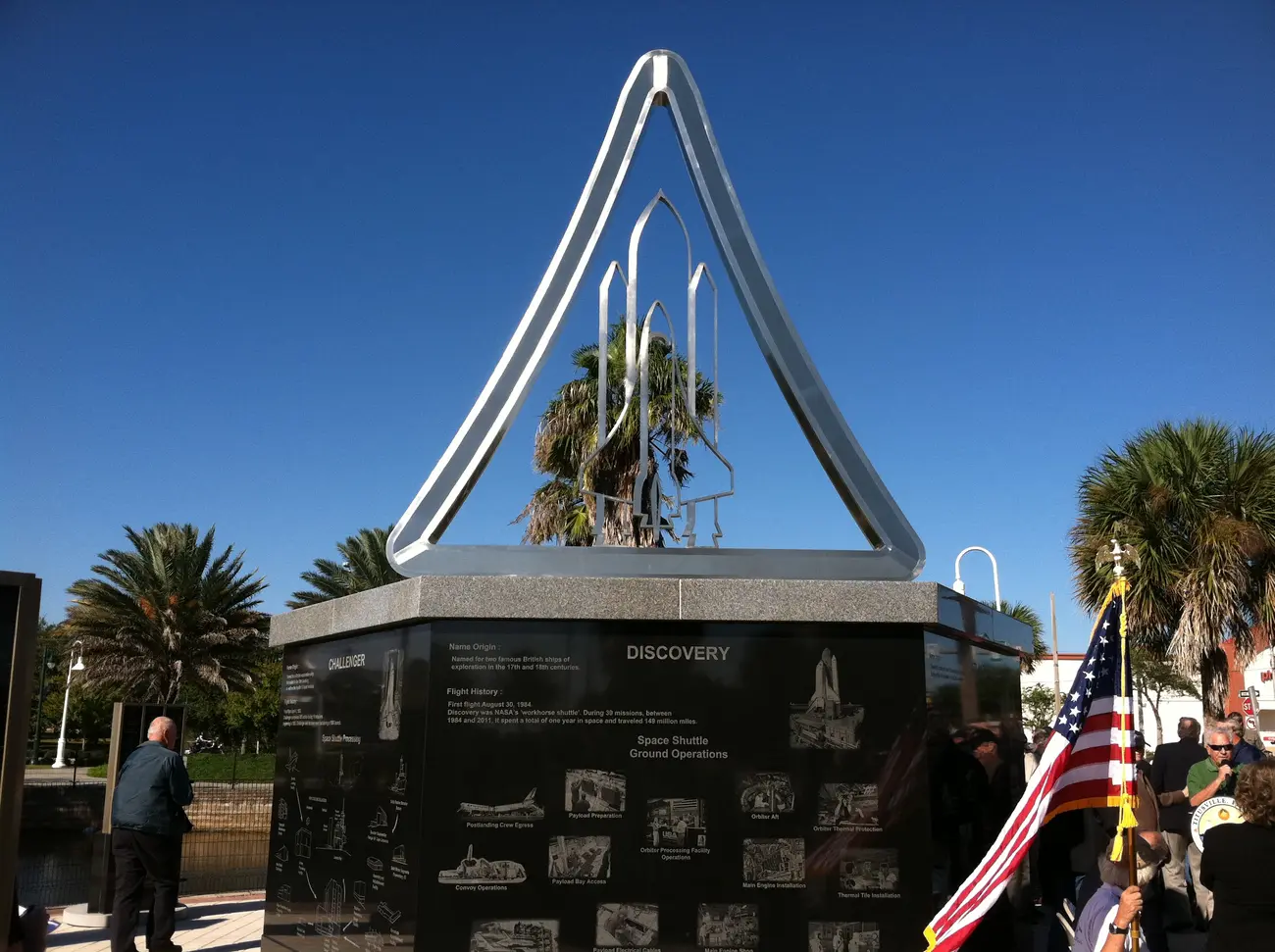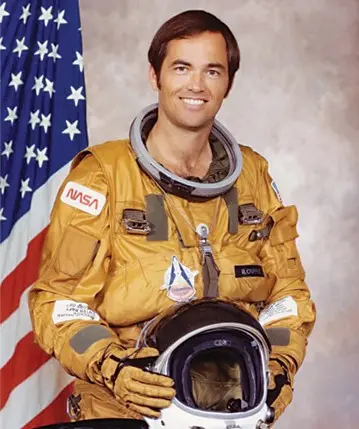Last Friday’s test flight of the Orion capsule takes America one step closer to reestablishing manned missions into space.
A new monument at Space View Park in Titusville provides the opportunity to reflect upon this country’s last manned space program.
The Columbia was launched for the first time on April 12, 1981, beginning NASA’s 30 year space shuttle program.
Planning for the shuttle program began in 1972, but it was the launch of Columbia nine years later that made the program a reality.
By coincidence, the launch occurred on the twentieth anniversary of the world’s first manned space flight by cosmonaut Yuri Gagarin.
The first shuttle had a two-person crew. Experienced astronaut John Young was joined by rookie astronaut Robert Crippen.
“It was an exciting time,” says Crippen. “It was one of the highlights of my life to be able to fly with John Young, one of my heroes, and the mission came off better, I think, than either John or I could have imagined.”
Crippen flew a total of four shuttle missions. He was commander of the first five-person crew that included Sally Ride, the first American woman in space, and the first seven-person crew. Crippen says that each mission was exciting, including his flight to repair the Maximum Mission Satellite. That first launch, though, was particularly special.
“They’re all unique in their own way,” says Crippen. “STS-1, of course, being the first flight of a vehicle that had never been flown before, even unmanned, has to stand out forever.”
During the 30 years and 135 missions of the shuttle program, two flights ended in disaster. Challenger exploded 73 seconds after liftoff on January 28, 1986, and Columbia was lost about 16 minutes before it was expected to touchdown on February 1, 2003. Crippen commanded missions on both of those shuttles.
“Both the Columbia and the Challenger were very dear to me,” Crippen says. “They were both great ships. There was some good friends on both of those flights that we lost, so it was heart breaking, obviously.”
The U.S. Space Walk of Fame in Titusville led efforts to create a large monument to the shuttle program. The $350,000 structure joins other monuments to NASA programs in Space View Park. Six black granite panels are engraved with images and text describing the shuttle program. An 8-ton steel outline of the shuttle on top of the panels points toward the sky.
“It’s great,” says Crippen. “The monument is to honor not the shuttle, per se, but the men and women that worked on it, that were part of making it such a success.”
The names of thousands of space workers are etched on pylons throughout Space View Park. Every American manned mission into space has been launched from the Kennedy Space Center, and Space View Park has provided spectators a front row seat for each of them.
Although NASA is still conducting unmanned launches and commercial space flights are happening, America’s space program is in a transitional phase.
The shuttle program ended with the launch of Atlantis on July 8, 2011.
“In my opinion, the program could have gone on,” Crippen says. “After we lost Columbia, it was doubtful that it would be continued. However, I didn’t expect to see it cancelled and not have a way of putting astronauts into space from the United States. Having to depend upon Russia is rather heart breaking to me, and I’ll be glad when we get a capability to put our people back up there again ourselves.”
In addition to serving as an astronaut on four shuttle missions, Crippen was Deputy Director of Shuttle Operations at the Kennedy Space Center and Director of the Shuttle Program at NASA Headquarters in Washington, D.C.
“I’m a proponent for going back to the moon,” says Crippen. “We only did a few camping trips up there and we really didn’t explore it and exploit it. It would give us the experience necessary to go on to Mars. We should go to Mars someday. I don’t think I’m going to live to see it, but eventually we will get there.”
The successful test flight of the Orion capsule gets us one step closer to Mars and beyond.
Dr. Ben Brotemarkle is executive director of the Florida Historical Society and host of the radio program “Florida Frontiers,” broadcast locally on 90.7 WMFE Thursday evenings at 6:30 and Sunday afternoons at 4:00, and on 89.5 WFIT Sunday mornings at 7:00. The show can be heard online at myfloridahistory.org.

